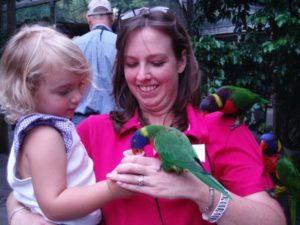“..if civilization is to survive, we must cultivate the science of human relationship – the ability of all peoples, of all kinds, to live together and work together in the same world, at peace.” – President Franklin D. Roosevelt

A Peace Master Plan is a framework to re-define your Zoo, Aquarium, Business or Organization as a peaceful oasis in an over-scheduled and uncertain world. It uses our interactive, on-site workshop format to identify key areas that can be aligned to support your new peace mission. Through various forms of presentations, discussions and exercises, we weave together the story of your institution into how it can be re-imagined as a Peace Park. Then, we walk forward in peace to form Peace Trails around the world, connecting your organization to others of like-mind and mission!
PEACE MASTER PLAN PROCESS
We are currently working with zoos and aquariums, as these ARE public Peace Parks, ev en if they are not marketed specifically as such. If you are a business outside of zoos and aquariums – please read on! These Peace Master Plans can very easily be applied to your organization as well.
en if they are not marketed specifically as such. If you are a business outside of zoos and aquariums – please read on! These Peace Master Plans can very easily be applied to your organization as well.
In developing a Peace Master Plan, we include a wide range of staff members in a variety of interactive sessions in order to get our results. By consulting with your staff, we begin to uncover a vision of where the future zoo/aquarium can improve and where it is already functioning as a Peace Park.
The natural setting, the diverse conservation and education programs, a long with the mission, make zoos/aquariums well suited to this peace role in our communities. The Peace Master Plan workshop looks at all areas of the zoo: exhibits, animal care, marketing, human resources, visitor services, PR, educational programs, community outreach, and horticulture to advance current projects or develop something new which can demonstrate this new orientation. Each area gets a tune-up as we search for ways to incorporate peace principles into the daily routine and experiences at the zoo.
long with the mission, make zoos/aquariums well suited to this peace role in our communities. The Peace Master Plan workshop looks at all areas of the zoo: exhibits, animal care, marketing, human resources, visitor services, PR, educational programs, community outreach, and horticulture to advance current projects or develop something new which can demonstrate this new orientation. Each area gets a tune-up as we search for ways to incorporate peace principles into the daily routine and experiences at the zoo.
Before we begin the workshop, we discuss current plans for any new facilities with the zoo leadership; what are the future exhibits or new programs that are being developed? This gives us a set of projects that can be influenced immediately and in which this new peace orientation can be applied. In this way, we tailor the peace product to your current direction.
We start the main workshop in a classroom format, where we present numerous ways that Peace can be integrated into your zoo and how it will influence the ways in which your staff relate to one another and how you interact with your guests. This presentation will be a general overview, giving everyone a basic understanding and knowledge of how peace principles work and the wide range of issues that can be included in discussions during this Peace Master Plan.
 Next we interact with various department heads to brainstorm areas that could be highlighted in the Peace Master Plan. Considering any current projects as a starting point, we look at ways to slowly insert Peace into the zoo. From the perspective of each department head, we will discuss what sorts of changes can be made to facilitate this new outlook. Maybe the Education Department’s new lecture series can include how animals form peaceful societies or how the Horticulture staff’s next garden can become a Peace Garden for visitors to reflect on their beautiful surroundings and imagine a world at peace. We can work with each department to envision how their efforts can contribute to the creation of a more peaceful community.
Next we interact with various department heads to brainstorm areas that could be highlighted in the Peace Master Plan. Considering any current projects as a starting point, we look at ways to slowly insert Peace into the zoo. From the perspective of each department head, we will discuss what sorts of changes can be made to facilitate this new outlook. Maybe the Education Department’s new lecture series can include how animals form peaceful societies or how the Horticulture staff’s next garden can become a Peace Garden for visitors to reflect on their beautiful surroundings and imagine a world at peace. We can work with each department to envision how their efforts can contribute to the creation of a more peaceful community.
After this first day, the group is dismissed with homework: What are three ways that your department can integrate peace principles into their current efforts? The next morning, we will gather again in a participatory workshop setting, and have each department share with the group what ideas have emerged. As each suggestion is given, we use the group to grade and prioritize these schemes into a set of projects for further development. Once all departments have reported and ideas are graded, we let the group decide which projects represent the vision for the zoo’s new peaceful orientation and those which are most worthy of inclusion in the overall Peace Master Plan. For example, one grading exercise uses sticky dots, where each participant is given five dots and gets to vote by placing one dot next to each of their five favorite projects; projects with the most dots score highest. As we evaluate the selections, we can assess how each project contributes to making the zoo an official Peace Park and that can be undertaken alongside current activities.
With the prioritized list of activities and projects, the group can spend some time fleshing out these ideas a bit more. Some might require a site visit to look at what would need to be done to incorporate this new concept into the zoo or community, or find the right location for a specific installation to be realized, such as a Peace Garden or Labyrinth. Our job is to document all the best ideas, develop a report that summarizes each project, its location or venue, and start to identify budgets and efforts that will be needed to realize each of the top 5 to 10 ideas.
time fleshing out these ideas a bit more. Some might require a site visit to look at what would need to be done to incorporate this new concept into the zoo or community, or find the right location for a specific installation to be realized, such as a Peace Garden or Labyrinth. Our job is to document all the best ideas, develop a report that summarizes each project, its location or venue, and start to identify budgets and efforts that will be needed to realize each of the top 5 to 10 ideas.
Each zoo and aquarium is unique, and each Peace Master Plan will also be unique and reflect those differences. It is our hope that we will facilitate activities that represent a vision for a more peaceful environment in which to work, to visit and to live.




